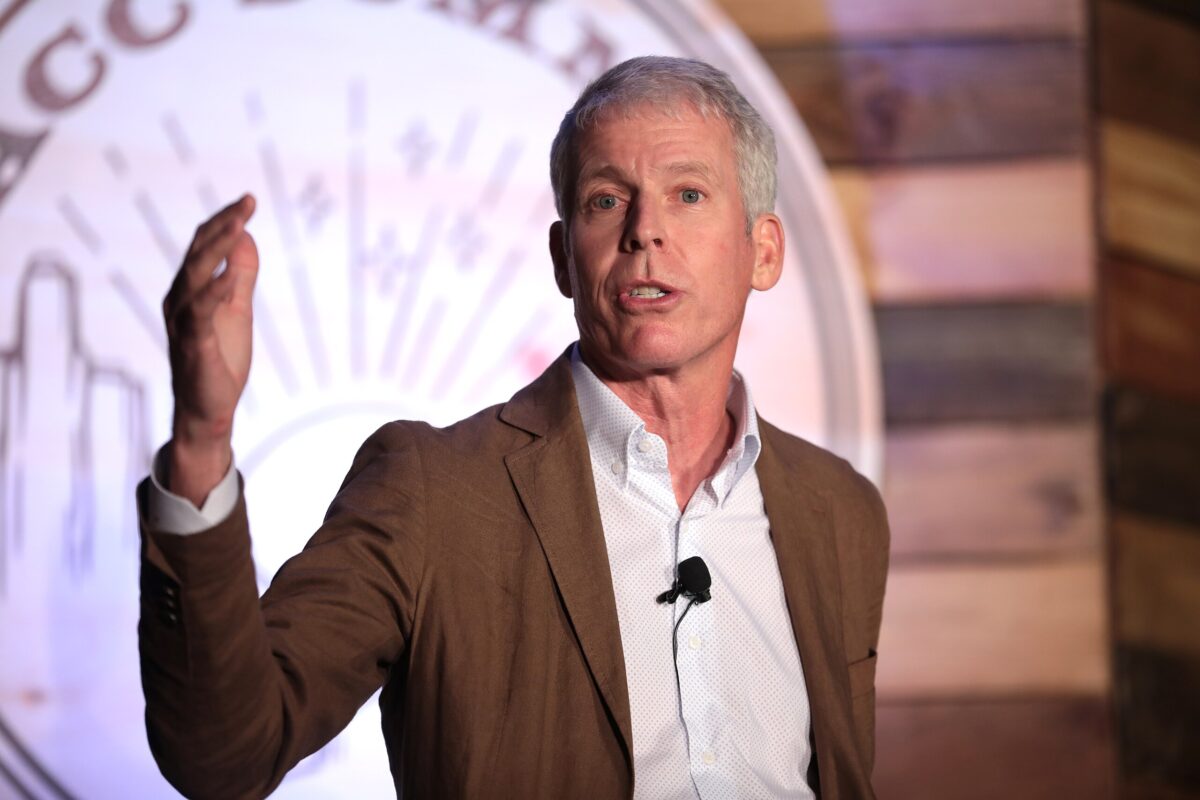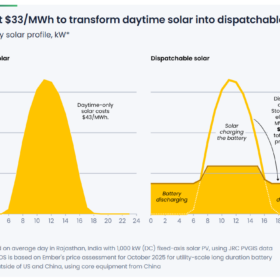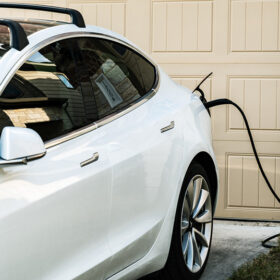The U.S. Department of Energy has released a new organizational chart that has removed groups focused on energy efficiency, renewable energy, and reducing carbon emissions.
A new hierarchical chart posted on the DOE website shows that the Office of Energy Efficiency and Renewable Energy, the Office of Clean Energy Demonstrations, the Office of Fossil Energy and Carbon Management and the Grid Deployment Office are no longer listed as part of the organization. The organizations are now expected to be absorbed by the Office of Critical Minerals and Energy Innovation.
“Thanks to President Trump’s leadership, the Energy Department is aligning its operations to restore commonsense to energy policy, lower costs for American families and businesses, and ensure the responsible stewardship of taxpayer dollars,” said Energy Secretary Chris Wright in a press statement. “These changes will help us better execute the DOE mission of delivering affordable, reliable and secure American energy for the American people.”
EERE
The Office of Energy Efficiency and Renewable Energy (EERE) was a driving force supporting clean energy advancement by driving down consumer costs and supporting research, development, and deployment.
EERE impact reports said utility-scale solar costs fell by 73%, onshore wind by 41%, and electric vehicle (EV) battery costs dropped by 79% over a decade under its cost-reduction support. The organization estimated it saved Americans an estimated $800 billion in energy costs since 1980.
EERE investments helped support a $2 trillion clean energy market in the U.S. and resulted in nearly 1,000 patents. The organization’s programs helped launch 154 energy innovation companies, creating thousands of jobs and raising billions in private capital, according to a 2024 investment report from the Environmental and Energy Study Institute.
The Office of Energy Efficiency and Renewable Energy (EERE) was instrumental in advancing clean energy, driving down costs for wind and solar power, and supporting innovation in building efficiency and sustainable transportation, while simultaneously bolstering U.S. grid resilience and workforce development.
OECD
The Office of Clean Energy Demonstrations (OCED) was established to help bridge emerging clean energy technologies from research and development to commercial-scale deployment. It was originally established with a total portfolio of over $25 billion in federal funds allocated through the Bipartisan Infrastructure Law and the Inflation Reduction Act.
OCED selected 113 projects across 42 states, which were designed to unlock billions of dollars in private investment by sharing the initial financial and technical risks associated with new technologies. However, under the Trump administration, DOE announced widespread cancellations of funding, including cutting over $3 billion in May 2025 and over $7 billion in October 2025.
The federal funds were intended to catalyze a much larger amount of private investment. For example, over $14 billion in private capital was tied to the $6 billion federal investment in the Industrial Demonstrations Program alone, much of which has now been lost to Trump administration project cancellations.
Other organizations
Also removed from DOE’s hierarchy is the Office of Fossil Energy and Carbon Management (FECM), which was tasked with pioneering carbon management systems, including carbon capture and storage, reducing methane emissions, securing critical minerals, and supporting energy and national security measures.
The organization obligated nearly $1.4 billion to fund 654 research and development projects between 2018 to 2023 for projects at industrial facilities and power plants that focused on permanent carbon storage or conversion into valuable products.
FECM also collaborated with the EPA on an $850 million program to help oil and gas operators monitor, measure, and reduce methane emissions, a potent greenhouse gas.
Also removed from the organization is the Grid Deployment Office (GDO). GDO managed over $14.5 billion in funding and grants to strengthen the U.S. power grid. These included the $10.5 billion Grid Resilience and Innovation Partnerships (GRIP) Program and $2.3 billion in formula grants to states and tribes. The programs were planning to add enough transmission lines to support 67 GW of new capacity by 2031.
The office also ran the Coordinated Interagency Transmission Authorizations and Permits (CITAP) program, which aimed to cut federal transmission permitting times in half. The GDO’s federal investments catalyzed more than $36.9 billion in combined public and private investment, according to a DOE factsheet.
Future funding
Upon the reorganization and funding cuts, non-profit climate policy organization Clean Tomorrow has launched a campaign called Re-Energizing America, a creating a roadmap to address the innovation cliff that will occur when substantial federal funding expires in 2026. The roadmap calls for $25 billion in DOE funding to research, development and deployment programs by 2030. Find the roadmap here.
This content is protected by copyright and may not be reused. If you want to cooperate with us and would like to reuse some of our content, please contact: editors@pv-magazine.com.









This administration is actively removing American innovation from the world’s future energy generation. It is conceding the energy markets of the future to China
And not only the energy markets…if it goes on, the entire future!
Absolutely insane self-destructive treason against humanity and the planet. There’s a special place in hell reserved for this fascist regime and we’re all going to see it as we’ll soon roast in the sun with them.
Thank you PV Magazine, I always refer people I argue and question with, to your research. I think you are ahead of Deciders, by about 3 mid-term elections… And I think high school kids should be asked to read this site, not for grades, but for understanding of political influence on their future lives’ work. Work isn’t alwayst bad. Only Business culture makes it seem bad.
Ignorance is bliss. Green energy is the best for the world future ❤️
Why have 4 different departments for the same department.
An estimated cost saving means nothing, I say it cost Americans 300 billion
Well it didn’t stop the gov from granting 1.5 billion to Wabash valley resources to build a fertilizer plant in vigo County indiana, on the grounds that it injects supercritcal liquid CO2 under ground in vermillion and vigo county to pay back the loan.
Has nothing to do with saving our earth. But it will harvest money from the poor and funnel it to the rich. This happened after our legislature devised a resolution to steal mineral rights by granting eminent domain to the company.
Let me get this clarified. As this agency existed, we pay billions in tax dollars to this fake boondoggle government climate hoax agency to save us / restrict us to save millions? Then telling us our toilet can’t flush poop, our washing machines don’t clean clothes, and our car engines are clogged up and engine lifespan is cut in half. Today, I tried to gas up my side by side, spilling fuel near my wellhead due to the erroneous Obama spout on the gas can. Your tax dollars at work folks!!!! Glad this agency is gone.
He spends our money but he will be gone and we can get things put back the way they should be.
The article should have underlined’businesses’ in the statement:. This decision just emphasizes that the goal of the administration is to produce very short-term goals to advertise political gains. Anyone with any “common sense” can see how the environment has changed in the past 10 years. Does the administration care about the next generation? Or the generation after that? We live in a terrible terrible terrible time until we get some common sense in the administration
Randomly available energy resource create inherently less stable system . Fortunately, as smaller independent resources they tend to average out. Wide area weather disputes that assumption.
Ask any electricity dispatcher what generation resource they hate most, and the answers the same. It’s the largest generator who is also highly unpredictable.
I can barely believe that we are so stupid. Maybe they’re mad at DOGE. Or maybe our best efforts are for naught. Humans had such promise, but now it’s time for Hospice. It’s been exciting to watch our progress.
“Thanks to President Trump’s leadership, the Energy Department is aligning its operations to restore commonsense to energy policy,”…Fossil Fuel dupe and definitely not our leader. We will continue to fight global warming and utility/fossil fuel greed with residential rooftop solar innovation.
I second that! The stupidity and incompetence of this administration gets worse by the day. But there are good things happening on the state and local levels, so there are still good people fighting the good fight.